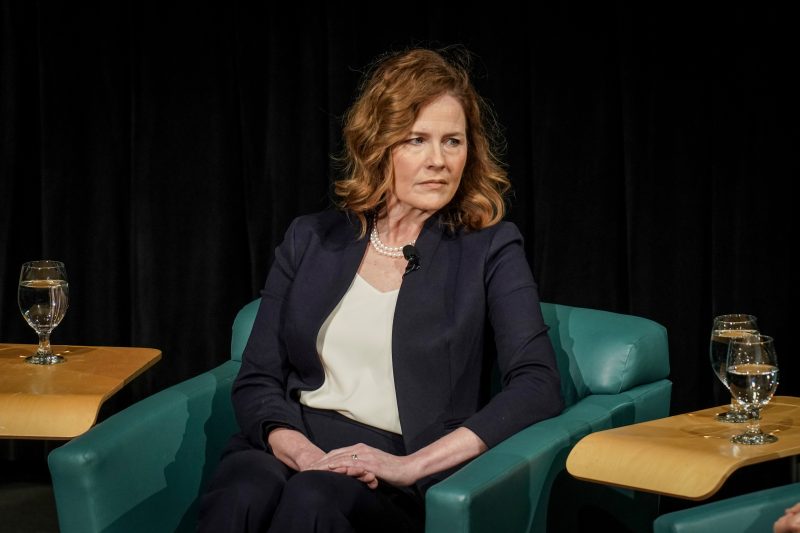Justice Amy Coney Barrett describes time she came home with bulletproof vest


COLORADO SPRINGS — When asked about the challenges of being a Supreme Court justice and a parent of seven children, Amy Coney Barrett told an audience Friday about a time she was sent home from the court with a bulletproof vest and her 13-year-old son saw it tossed on a bed.
Her son asked whether it was a bulletproof jacket, Barrett said, and she grew apprehensive thinking that maybe she should have hidden it from him. But his reaction surprised her.
“He said, ‘That’s so cool! Can I try it on?’” Barrett said, drawing laughter from the crowd. But her son then asked more seriously, “Why do you have a bulletproof vest?”
The comments came during a 45-minute discussion at the 10th Circuit Bench & Bar Conference that largely stuck to personal topics, rather than cases and controversies surrounding the high court after a contentious term. Barrett spoke in conversation with Chief Judge Jerome A. Holmes and Judge Allison H. Eid.
Barrett said her family has “adjusted just beautifully” to the pressures of her being on the court, but she has found it personally challenging to constantly travel around with a security detail of U.S. Marshals.
Barrett also relayed that she and fellow Justice Sonia Sotomayor are doing a PBS show on the topic of civility and that she attempts to keep alive her New Orleans roots by eating gumbo and jambalaya at home.
Barrett did briefly comment on the court’s work when asked whether disagreements over court opinions spill into personal relationships among the justices. She said they did not.
“On the court, justices are sparring over ideas, not one another,” Barrett said. “It’s not personal.”
Barrett, 52, emerged as a singular voice among the court’s conservative supermajority during her fourth term, which ended in July. She was willing to criticize fellow Republican nominees and occasionally break with them.
In one caustic dissent joined by the court’s liberals, she accused the conservative majority of “feeble” and “cherry-picked” arguments in its ruling putting on hold a plan by the Environmental Protection Agency to regulate air pollution.
Barrett often advocated for a more incremental and pragmatic approach than some of her conservative colleagues who wanted to move more aggressively. But Barrett was still a reliably conservative vote on the court’s weightiest issues, often siding with Chief Justice John G. Roberts Jr. and Justice Brett M. Kavanaugh.
The Supreme Court has had a busy summer weighing roughly two dozen cases on its emergency docket. Most recently, the court cleared the way for the Biden administration to strip millions of dollars in health-care funding from the state of Oklahoma because officials there have refused to comply with a federal requirement that they inform patients about abortions.
Justice Neil M. Gorsuch joined fellow conservative Justices Samuel A. Alito Jr. and Clarence Thomas, saying they would have granted the state’s request to the high court to block the Biden administration’s action.
Gorsuch gave the introductory remarks to the 10th Circuit conference in the Rockies on Thursday. He outlined cases that affected mountain states, arguing that the court was more unified in its decisions than it is given credit for and praising his retired colleague and ideological opposite, Stephen G. Breyer.
Gorsuch relayed a common refrain from Breyer, who liked to say that if you listen to someone else speak long enough, you are likely to find some common ground that can serve as a starting point for working together.
“That thought, that wisdom, that attitude Steve brought to our deliberations every day, and we profited hugely from it,” Gorsuch said.
The Supreme Court’s next term begins in early October. The justices will hear cases involving gender transition care for minors, ghost guns, and the innocence claim of a man on Oklahoma’s death row.
Ann E. Marimow contributed to this report.











